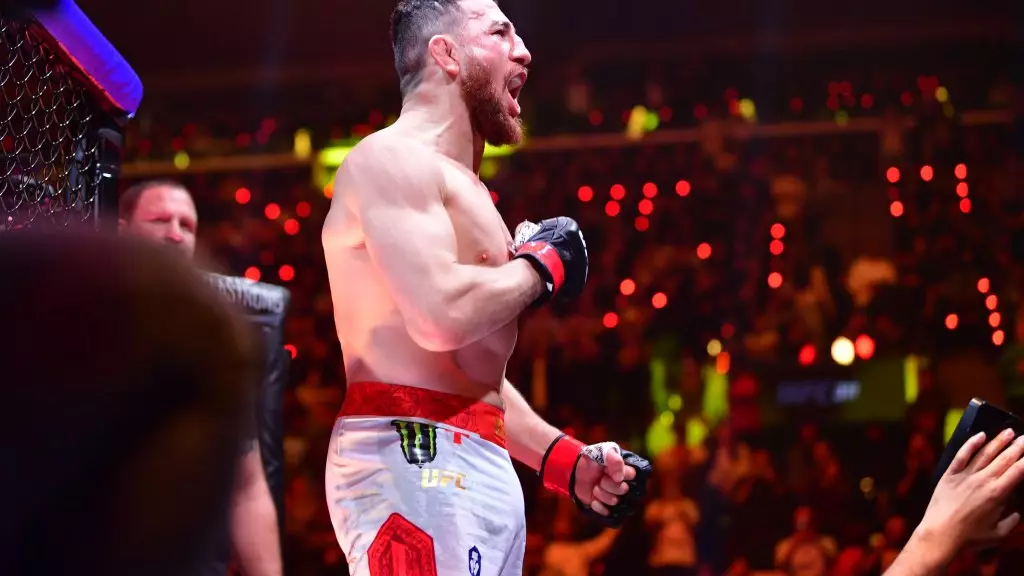In the world of mixed martial arts, particularly within the UFC bantamweight division, Merab Dvalishvili has carved out a reputation that goes beyond his skills; he is often referred to as “The Machine” for good reason. Recently, during UFC 311, he showcased an extraordinary level of endurance as he outlasted Umar Nurmagomedov, securing a unanimous decision victory that emphasized his superior cardio. With a remarkable string of victories now extended to twelve consecutive wins, Dvalishvili’s conditioning is not merely a byproduct of diligent training; it could be influenced by the unique behaviors that characterize his persona.
Cory Sandhagen’s Intriguing Hypothesis
Fellow bantamweight contender Cory Sandhagen has presented an unconventional theory about Dvalishvili’s exceptional stamina. According to Sandhagen, Dvalishvili’s emotional expressiveness—manifested in his vocal outbursts—may contribute significantly to his physical performance. In a recent analysis on his YouTube channel, Sandhagen remarked, “Merab is always yelling… he’s working those lungs of his.” This idea posits that the act of calling out, directing energy toward fans, and engaging with his environment actively conditions his respiratory capacity.
While this theory may initially seem whimsical, it echoes findings in sports science. Research published by the National Library of Medicine indicates that vocal expressions can enhance muscular power and significantly affect cardiorespiratory responses. Such physiological effects might elevate Dvalishvili’s endurance levels, enabling him to maintain his relentless pace, especially during strenuous final rounds of fights.
Tap into the emotional spectrum of an athlete, and one may discover that feelings can fuel performance. Dvalishvili’s emotional intelligence becomes a valuable asset within the octagon. His ability to channel stress and anxiety into motivation allows him to remain composed under pressure while simultaneously maintaining an aggressive approach. This balance of emotional energy could potentially lead to improved stamina, pushing him beyond the limits that many of his opponents find frustratingly difficult to match.
Moreover, this theory suggests that engaging with his feelings does not drain his physical energy; rather, it may contribute positively. Emotions can release adrenaline and endorphins, which play roles in enhancing stamina and pain tolerance—critical elements for a fighter engaging in exhaustive bouts.
While Merab Dvalishvili continues his ascent in the bantamweight ranks, he stands at an intriguing intersection of psychological and physical wellness. If Sandhagen’s hypothesis holds weight, it raises the question of whether other fighters could benefit from similar techniques. Vocal expression, emotional regulation, and their impacts on performance may warrant further exploration within athletic training regimens.
As we look ahead, Dvalishvili’s journey will inevitably attract even more attention, especially as he defends his championship title. His unique style and conditioning may serve as a blueprint for future fighters, illustrating that there is so much more to endurance than just grueling training sessions. The integration of emotional dynamics in sports performance could redefine strategies for aspiring athletes seeking to excel in the high-stakes environment of the UFC.

